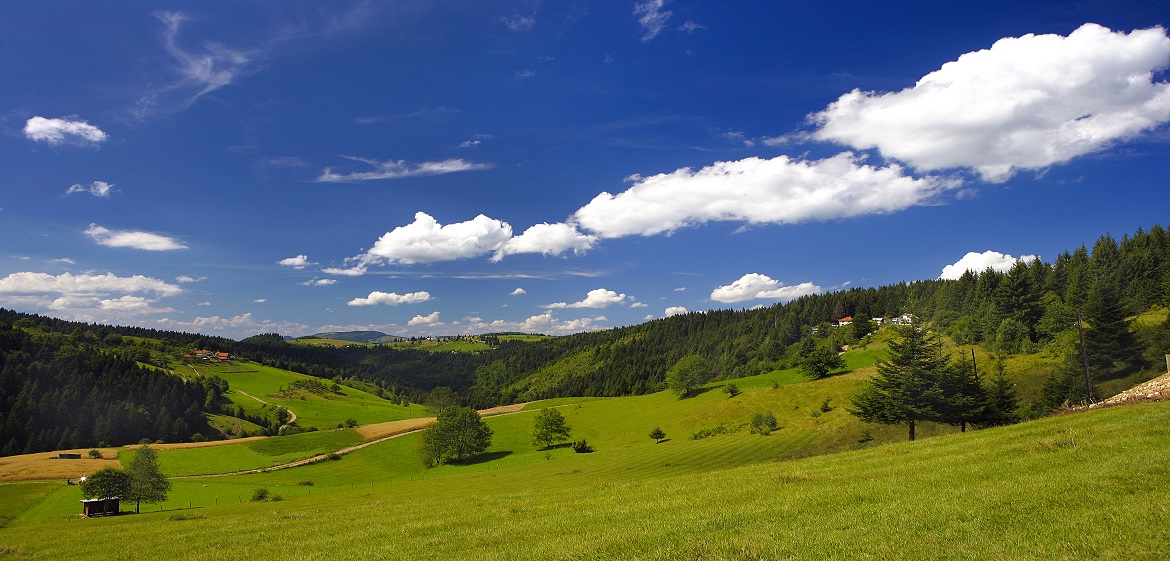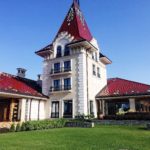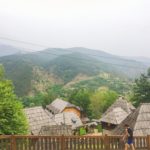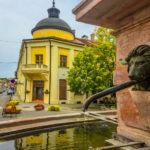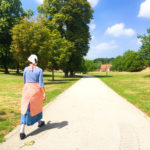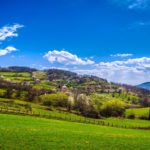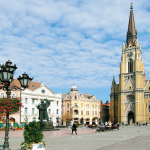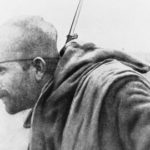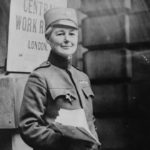Sure, five days is nothing when you need to learn about a whole country, and especially when you need to break a lot of stereotypes. However, the last part of the Original World tour of the Western Balkans gives our visitors an excellent overview of what is there in this Balkans country that many mixes with Siberia or Syria. Starting from troubled Kosovo we went to see mountains and medieval Orthodox Christian monasteries, an Oriental looking town, a wooden village from days long gone, the mausoleum of a royal dynasty, went on a train ride up a mountain, and, of course, spent two days in fabulous Serbian capital that everyone is talking about.
Day 1: Peć/Peja – Patriarchate of Pec – Novi Pazar – Sopoćani Monastery – Mt Kopaonik
Waking up by the fast-flowing Bistrica at the foot of the awesome Prokletije, the “Accursed Mountains”, is always a treat. After I met the group and had an introductory chat to break the ice and feel how much energy they have for our next days, we got into our minibus and headed out of the town to the Patriarchate of Peć, which lies just outside the town. This nunnery is the ceremonial seat of the Serb Patriarch, the head of the Serb Orthodox Church but also a real treasure chest of Orthodox Christian art and architecture. There are four churches joined in one whole. Inside of them hundreds of 13-16th centuries frescos of long-bearded saints and rulers, as well as a dozen or so tombs of patriarchs.
Heading across the mountains we negotiated our way past two borders and along with some wild looking forests and rivers to reach Novi Pazar, the hub of the Muslim community in Serbia. The oriental feel was boosted by a lunch break in which you can choose among many ćevabdžinica known far and wide. On the other side of the town, in a tranquil setting so different from that of Novi Pazar, stands the solemn Sopoćani Monastery whose interior cherishes the frescos that got it on the UNESCO’s World Heritage list. After a friendly chat with monks and a novice about details of their life, we’re back on the road.
Two hours later and one ascends up a mountain we were in a different climate, right under the summit of Kopaonik is one of many hotels of this prime skiing resort in Serbia.
Day 2: Kopaonik – Studenica Monastery – Ivanjica – Sirogojno – Zlatibor
Descend through Kopaonik’s woods left me with enough time to take questions from our guests and dig again into the details of Serbian past (which, being a historian, I enjoy time and time again). Seemingly in no time, we were in front of walls protecting the Monastery of Sudenica. Another UNESCO site and one of my personal favorites, Studenica is a cornerstone of Serbian medieval art and architecture. There’s the white marble church in a unique mix of Romanesque and Byzantine art, great paintings from two different schools, a treasury, towers, walls and – infinite peace.
Heading deeper into mountains we made a lunch break in a small town of Ivanjica whose charming high street and a waterfall left my group wishing we could spend more time here. There followed a ride following river Moravica, the heart of Serbian raspberries land, line after line of this sweet fruit. If you ever ate raspberries there is a big chance they came from here, since Serbia is one of the world’s greatest producers.
Our next stop was in a different, wilder setting, in the vast pastures of Mt Zlatibor. After a sudden flood of Biblical proportions that made us run for cover into a local church (luckily a sight onto itself), we were free to see the open-air museum of Sirogojno. Here we were in a different world of wooden houses with steep roofs and open central fireplaces that is – to the surprise of my group – not that old. The 45 minutes ride to our place for the night was voted to be the most scenic on the whole tour, though I must admit that the picture-perfect scenery was made to look even better by the low sun and magical looking clouds. We spent our night in a cozy hotel on the brink of Zlatibor resort, a popular getaway for the Serbian city slickers.
Day 3: Zlatibor – Mokra Gora – Topola – Belgrade
On this morning another scenic ride took us to Mokra Gora which, despite its name meaning “Wet Forest”, was surprisingly dry, even sunny! After a coffee break, we got on an old train on a narrow-gauge railway. The train went up, pass innumerable tunnels, making twists and turns that gave it the name. On the downhill ride, the train makes several stops so that guests can enjoy beautiful views of Mokra Gora’s green vale. During one longer stop, I was proud to introduce the brave and curious of my group to klekovača eau-de-vie in which juniper berries meet šljivovica plum brandy, the Serbian national drink. Returning across Zlatibor we decided for a lunch break in one of the restaurants in the village of Mačkat, known for its good food, especially the dried meats.
It’s hard to make an impression just before the end of a long tour, but the mausoleum church of the Serbian royal house in Topola never fails to impress. its position on top of Oplenac Hill, the forested park surrounding it and the shiny white marble exterior are all just foreplay to what is to be seen inside: 40 million stones in hundreds of different colors are arranged in hundreds of mosaic compositions, all of them copies from various Serbian medieval monasteries. Even more delightful is the mellow toned crypt where bodies of 25 members of the Karadjordjević dynasty lie buried.
After the arrival at Belgrade’s grand old Hotel Moskva, located in the very center of the city, the pastures of Zlatibor seemed very far away.
Days 4 & 5: Belgrade
There’s so much to Belgrade, from its great position to its fascinating 2000-years-long history, including some of the biggest battles ever (trust me on this one), and as a native Belgrader, it always gives me a special pleasure to introduce you to this city. On the morning of our first day in Belgrade, we headed through its town core, full of historic buildings as well as shops and terraces of cafés full of people all day long. We decided to skip the coffee break in “?” café (sic!) since we were eager to reach the very heart of Belgrade. Beyond the leafy Kalemegdan Park spreads the historic citadel wherefrom Belgrade started. Rising above the confluence of River Sava into the Danube it seems to offer as much in terms of fascinating views as it does when it comes to monuments from various eras, from Roman via medieval to Habsburg baroque. One of the most beautiful amongst them is the Ružica Church which abounds in curious details connected with World War One.
After a free afternoon, we met in the evening for dinner. It’s only a five-minute walk to Skadarlija, a district overfilling with restaurants old and new, all of them with live music. Although touristy, it is still a place where many a Belgrader celebrates important occasions in his/her life. The evening was perfect for sitting outside, which we did so that food, drinks, and talks were complemented by people watching.
On our second day here – and the last one on the whole of the tour – we walked to the Nikola Tesla Museum where we learned how this American inventor of Serb descent shaped the modern age. We drove past the colorful Kalenić farmer’s market but since it was being reconstructed we continued straight to the Church of St Sava, a megalomaniac project that is still more a construction site than a complete church. Still, the church offered an opportunity for some great photos and opened up a series of questions about identity and religiosity in present-day Serbia. Next on our list was the compound best known as the “House of Flowers” for the final resting place of socialist Yugoslavia’s life-long president Josip Broz Tito, a figure that keeps fascinating and provoking different opinions even nowadays.
After a break for an independent lunch in the city center, we started somewhat earlier to see a bit of New Belgrade, that brainchild of the socialist era, as well as Belgrade’s equally historic but smaller twin – Zemun. This is where we also had our farewell dinner, in a fine restaurant overlooking the Danube. It was time for candles, fine wine, last questions, further reading recommendations, and farewells. Besides enjoying themselves and learning a few things, the most important thing for me was to let my guests know that they only scratched the surface and that there is so much more to Belgrade, Serbia and indeed the Balkans.

